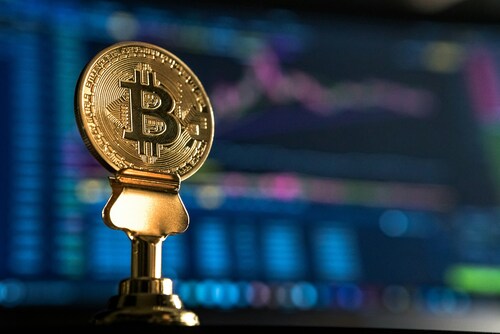Music creates a mirror for societies. Be it from tribal chants to symphonies to the most creative lo-fi beats on streaming platforms, it changes with humans. And now the new transformation, the latest one-melding tradition with innovation and creativity with artificial intelligence-comes with another transformation yet again in today’s digital age. Moreover, future music is not simply going to be characterized by genres and styles; rather it is how sound is formed, distributed, and engaged.
Now that technology is advancing rapidly to touch almost all corners of life, here music is found at the threshold of emotion and engineering. Trends suggest that one’s music past and future will depend largely on AI, immersion, and hyper-personalization-not to forget its soul.
The Rise of Artificial Intelligence in Music Composition
One of the most groundbreaking things that ever happened in music history is AI music. Composition of music was always the sole right of musicians who learned to play an instrument or could afford to pay for the service of a professional recording studio. But then, all of a sudden, everything is different. With such a free-of-charge AI music generator around, any individual who has an idea can make his music idea come true—no expertise required.
These computer programs can sift through millions of sounds, styles, and arrangements to create music that evokes a certain mood, tempo, or subject. From lo-fi chillhop for a study group to an orchestral soundtrack for a short film, AI can create it in a matter of minutes. For indie artists and creators, this is a game-changer. It makes music-making accessible to all and provides infinite options for experimentation.
While other people are afraid that AI is diluting the human factor to music, some are convinced that AI can be worked with as a partner artist. One can give an AI a melody, a mood, or even a verse and the AI spews out several versions to make new options. It’s not killing the artist; it’s providing access roads to the skill.
Personalized Music: Soundtracking Your Life
With smarter streaming, listening to music is more personal than ever before. Algorithms already know not only what our favorite type of music is but even what we do while we’re listening—what we listen to when we get up, what we listen to while we’re working out, what we listen to when it’s time to go to sleep. That hyper-customization will become even more individualized as AI becomes wiser.
Playlists will not only be created from our music history, but from our mood, where we are, the weather, or our heart rate. Entering a room and having your smart speaker begin playing something that you match in the mood you’re in—no mouth to open and say it to do so.
This degree of individualization is not just advantageous for listeners. Such epiphanies can be leveraged by artists to get attuned to their listeners, in that they can plan their releases and marketing campaigns in a way such that they coincide with a level which is optimized.
Virtual and Augmented Reality Concerts
The pandemic also accelerated the transition to virtual concerts, and now the trend is a reality for totally immersive experiences. I
Besdes, the technology grows to be more ubiquitous, and these virtual concerts can be the new norm of the future forward, particularly for those who could not make it to the concert to see their favorite artists perform. This also opens up channels for artists to try out telling stories, performing, and conveying themselves in ways that cannot be conveyed on the live stage.
Genre-Bending and Global Fusion
Cultural borders within music are dissolving. Social media and global streaming are witnessing artists from around the globe collaborating more than ever, creating fusion genre tracks that cannot be categorized. It is no longer exceptional to listen to Latin beats merging with K-pop or Afrobeats merging with electronic synths.
This global cross-fertilization is not a flash in the pan, however—it’s a indication that there is an era of more play and freedom in music. Children are braver today to turn things on their head, mix languages, and borrow ideas from anywhere. With outlets like TikTok to spread sideways and off-center music, such fusions can overnight amass huge followings.
Here also, AI is involved. Artists can mimic different world sounds, beats, and instruments with a free AI music maker and look for new inspiration or even compose full-fledged songs with an international touch.
Sustainability and Ethical Innovation
With the music market growing, its ecological and ethical footprint is more important now, too. Merchandise, touring, and production all have tied sustainability issues in common. Future music fans should expect more bands and labels trending toward green procedures—from digitally issued merchandise to ecotour campaigns.”.
Here again, AI would be beneficial. With less hardware equipment to use to make and distribute music, and with technology more accessible that does not require so much studio configuration, music making can be much kinder to the environment. Cloud-based AI applications permit remote operation and dissemination of the necessity for so much equipment and travel.
This is not carbon-reduction-only sustainability momentum; this is a cultural revolution. Fans will increasingly seek to identify with artists who share their values, so accountability and transparency will be the keys to success in the next decades.
The Role of Community and Collaboration
Community’s resurgence is among the other seismic shifts in the music industry. Musicians and fans are uniting more than ever on fan-made Discord chat rooms, songwriting Twitch streams, or live Q&A sessions over Instagram. These aren’t fleeting acquaintanceships—they’re changing how music comes to be, distributed, and celebrated.
Technological advancement allows one to work in time zones and across borders. A Brazilian singer, a Seoul-based producer, and a Berlin-based beatmaker can all collaborate simultaneously. All the more quickly and conveniently is facilitated by software such as an AI music generator for free. Co-creators can work at speed and experiment simultaneously without having to be in the same room.
This sense of belonging is the one that directly carries over into the emotional power of music. People don’t so much want to hear songs; they want to belong to something, to a story, to a cause, to a piece of history. Creatives that will endure the test of the next few years are those that produce real connection, either through music, message, or mission.
Conclusion
In all the glorious advances that have been made technologically, one thing never gets old: the emotional sincerity of music. Whether a heartbreak ballad of despair, a political anthem, or a dance song, music has the capacity to reach us. Form and style, and even atmosphere, can be duplicated by machine—only the human heart gives a melody life.




